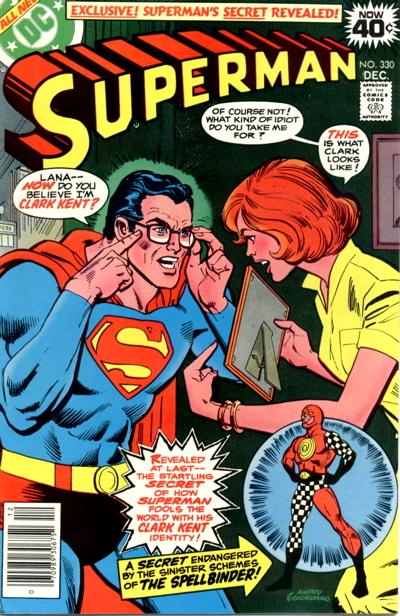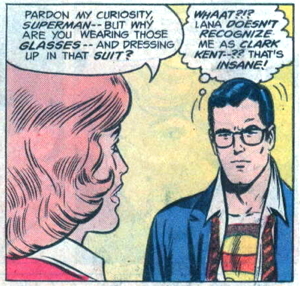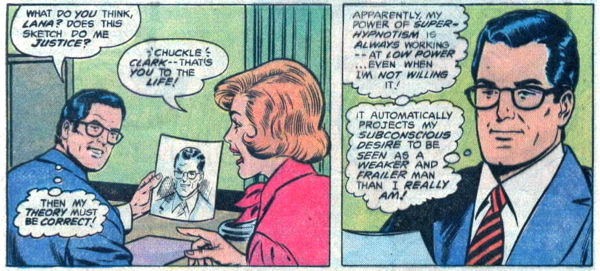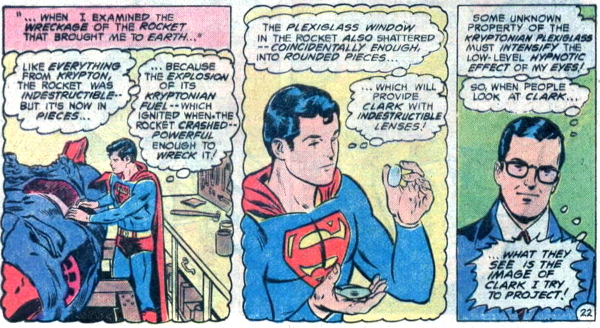So it turns out people aren’t tired of superhero movies after all, judging by the first weekend take for Spider-Man: No Way Home, which earned more money in a four-day frame than any other movie that has ever been made except for Avengers: Endgame. It looks like these films are going to be around for a while as a dominant pop cultural force, and comic book readers know exactly what to expect.
When there’s a new movie that’s coming up based on a Marvel or DC property, that means it’s time to relaunch the comic book, and have a new #1 out on the racks for people to pick up, read for two issues, and then decide that they don’t like it as much as the movie. These days, the relaunch titles last for about 12 to 18 months, and then get replaced by whatever’s coming next in the movie release schedule.
In 2021, we’ve seen relaunches for Shang-Chi (vol 2), Black Widow (vol 8), Eternals (vol 5), Suicide Squad (vol 7) and Venom (vol 5), plus a new Hawkeye: Kate Bishop title to tie in with the Disney+ show. This is what comics are for now, to support the movies and to occasionally come up with a new bit of intellectual property, like a Black Spider-Man, a female Spider-Man, a Black female Iron Man, a Muslim Ms. Marvel, a bisexual Superman and a Black gay Aquaman, all of them ready to be turned into cartoons, live-action TV shows and blockbuster movies, whenever people get around to it.
But back in 1978, DC wasn’t really sure what they were supposed to do about the upcoming Superman movie, except buy tickets, so their response was all over the place.
They started a new Superman team-up title called DC Comics Presents, and they launched a new “Mr. and Mrs. Superman” back-up feature in the Superman book about a newlywed Lois and Clark, in an alternate universe. They also wrote a four-issue story designed to sell diecast Supermobile toys, and they published a special Superman vs Muhammad Ali comic.
On the other hand, in what seem like perverse anti-tie-ins, they didn’t publish any comics that feature Lex Luthor all year, plus they reprinted the story “Kryptonite Nevermore!” from 1971, to make sure that readers were aware that Superman wasn’t vulnerable to Kryptonite anymore. They also published a story called “The Super Sellout of Metropolis!” which I interpret as a way of working through their ambivalent feelings about the movie.
And to cap off the year, just in time for the movie release, they published a story called “The Master Mesmerizer of Metropolis!” which offered a full and unnecessary explanation for why nobody recognizes Superman, when he’s in the guise and garb.

This is Superman #330, cover-dated December 1978, and you can tell it’s going to be exciting because Superman and Lana are already having a DEFCON 2 level argument and the story hasn’t even started yet.
Superman is pointing directly at the Clark glasses perched on his furious face, and screaming in two-tone perplexity: “Lana — NOW do you believe I’m CLARK KENT?” which is exactly the behavior that he’s been trying to avoid for the last forty years.
“Of course not!” Lana slings back at him. “What kind of idiot do you take me for?” He’s taking her for some kind of idiot. They’re both posing in a kind of crouching tiger battle stance, and they each have a prop, which they’re indicating to each other in quite an urgent way. Hers is a framed picture. “THIS is what Clark looks like!”
“Revealed at last —” it says, in a jagged caption explosion taking place uncomfortably close to Superman’s below-the-belt area, “the startling SECRET of how Superman fools the world with his Clark Kent identity!”

The story starts with Superman having a dream that all of his friends recognized him all at once. And it’s right here, three hundred and thirty issues into his crime-fighting career, that Superman realizes that his life doesn’t make any sense.
“Is my Clark Kent disguise really that bad?” he asks himself. “Even if I do change my voice slightly when I pose as Clark… can my dual identity really be that easy to see through?!”
He brushes aside his forelock and puts on his glasses, and thinks: “Hmm — now that I stop to think about it… that’s the dumbest disguise I’ve ever seen!”
So that right there is a clear example of the cure being worse than the disease. I know that it’s silly that nobody recognizes Superman with his glasses on; it’s just one of those things that you need to accept, if you want to enjoy stories about Superman. You figure he must have arranged it, somehow. But it turns out that my acceptance of that silly premise was based on the implicit assumption that the story and I were on the same side.
Superman suddenly realizing that it’s a dumb disguise means that the character has gone through the last four decades without noticing the thing that every child in the world figured out ages ago. It’s like he walked out of the bathroom in 1938 with his fly down, and he’s just getting around to zipping it up. How do we understand the basic principles of Superman’s life better than Superman does?

And then he looks us straight in the eye and starts mansplaining it to us, like he’s doing us a favor. “Uh-unh!” he thinks. “Superman wearing glasses is what I look like! But what else should I expect? Ordinary people start wearing glasses, do their friends say, ‘Who are you?’ No — They say, ‘Oh… you got glasses!'”
Yes, Superman, thank you, I already know that; I was the one who said that to you, back when I was in second grade. How are you just figuring this out?

Now, there is an actual historical reason why the dual identity is part of the comic’s premise, which is: Siegel and Shuster didn’t care. In the early stories, Superman was just a big violent psychopath who crashed through your door, picked you up with one hand and beat you to death with your own living room. There was no reason for anyone to connect this unstoppable force of alien aggression with some random guy wearing glasses and a tie.
This isn’t a story about Superman putting on glasses, and people not recognizing him. It’s a story about Clark Kent shedding his human form, and turning into a sharknado. You don’t look at the Four Horsemen of the Apocalypse thundering in your direction, sowing devastation and despair, and wonder what they’d look like if they put on glasses, and started working in your office. It’s just not a thing that you consider.
The problem started when they’d written so many stories about Superman and Lois that it started to feel routine. At first, Superman was like a natural disaster that Lois was attracted to. He was the Tasmanian Devil, whirling in through the front door, reducing every room in the house to splinters, and then barreling out the back door, and off into the distance.
But after a while, Superman slowed down, and became a regular feature on the landscape, just another person for the other characters to interact with. He was tamed, and domesticated.
And that’s the point where it started to be weird that nobody recognized him as Clark Kent — but by then, it was too late. The dual identity was already established; it was a crucial part of the premise, and they couldn’t change it. It just stopped making sense, that’s all.

Now, I’m not going to waste your time or mine, trying to be interested in the plot of this stupid comic book story. It involves a supervillain with hypnotic powers, who hovers in the air and makes people do things that Superman would prefer that they didn’t do. Superman decides that he’s going to inoculate the citizens of Metropolis from being hypnotized by broadcasting to the entire city on a giant floating TV screen that magically appears in the sky, and asking everybody to stare at his highly-polished belt buckle.
“You feel yourself getting sleepy!” he commands basically everyone. “Your eyelids are getting heavy… you can barely keep your eyes open!” People used to trust authority figures a lot more than they do now.
His hypnotic command is to tell everybody to resist all other attempts at hypnosis until he defeats the Spellbinder, at which point he’ll release everyone from their trance, and they’re free to go and get hypnotized again as much as they want.

Once that’s all arranged, he goes to the wardrobe room and changes back into his Clark Kent clothes, which I guess he usually does in a different way because all of a sudden there’s an irreparable security breach and everything is over.

Except that it’s not. “Pardon my curiosity, Superman,” says an extremely polite Lana, “but why are you wearing those glasses, and dressing up in that suit?”
“Whaat?!?” Superman thinks. I told you about the thinks. “Lana doesn’t recognize me as Clark Kent–?? That’s insane!”
He tells her that he’s considering disguising himself as Clark to fool the Spellbinder, but Lana dismisses the idea. “I admit there is a superficial resemblance,” she says, “but you’re too heavily-built… and you’re much too handsome! No, forget it! You don’t really look like Clark at all!”

Once that’s over, Superman releases everybody from their anti-hypnosis post-hypnotic suggestion, so now they’re vulnerable to regular hypnosis again, thank goodness; all is right with the world.
But now he gets to figure out the big secret, which is that people don’t see Clark Kent the way that he really is; everybody sees him as a frail, older man with a receding hairline, even when they’re looking at photographs.
The explanation for this will not make you happy. In fact, if you’d like to bail right now, and skip ahead to tomorrow’s post, then feel free; I don’t need to burden you with it, if you’ve got other things to worry about.

He shows Lana the sketch, and she agrees that that’s what Clark looks like.
“Then my theory must be correct!” he says, still in thinks. “Apparently, my power of super-hypnotism is always working — at low power… even when I’m not willing it! It automatically projects my subconscious desire to be seen as a weaker and frailer man than I really am!”
So that’s why Lana thought he was just Superman with glasses on, when she saw him earlier — she was under his limited-time anti-hypnosis hypnosis, so she wasn’t receiving the regular everyday hypnosis that he’s been generating for the last forty years without realizing it.
Now, at this point, I am actually still on board with this concept. I always figured it was some kind of magical space monster pheromone that he emitted, which made people not question whether he was Clark, somewhere on the spectrum between elven glamour and Doctor Who’s psychic paper. You know what I mean, one of those quiet shut up don’t really think about it type magic spells where it works in the story as long as you don’t ask any further questions.

But goddamn it, now they’ve got to go and drag out the midi-chlorians, and spoil everything. If you’re not familiar, midi-chlorians are a species of intelligent microscopic organisms that live inside of people from Star Wars, and if you have a high midi-chlorian count, then that makes you a Jedi and allows you to use the Force. Everybody understood the Force perfectly well for the first twenty years of Star Wars, and then George Lucas made The Phantom Menace and all of a sudden we needed a science-fiction word for it.
Well, Superman’s midi-chlorians are apparently his glasses. He explains to us in further thinks that when he was a young boy, he discovered that he couldn’t use regular glasses, because his heat vision would melt the lenses.

So then we get some thinks within thinks, as the young Superman messes around with the wrecked rocket ship that brought him to Earth.
“Like everything from Krypton, the rocket was indestructible — but it’s now in pieces, because the explosion of its Kryptonian fuel — which ignited when the rocket crashed — was powerful enough to wreck it!”
And then this: “The plexiglass window in the rocket also shattered — coincidentally enough, into rounded pieces… which will provide Clark with indestructible lenses!”
And then we come back to Clark, to bring us home: “Some unknown property of the Kryptonian plexiglass must intensify the low-level hypnotic effect of my eyes! So when people look at Clark… what they see is the image of Clark I try to project!”

There’s more. “And I couldn’t create a self-hypnotic block against the Spellbinder because I had my glasses on when I tried… the same thing in the specs that intensifies my super-hypnotism must prevent it from working on me… which is why I never see myself in a mirror the way others see me! Cameras must reproduce my eyes’ hypno-effect perfectly — because people recognize Clark on TV and in pictures!”
That’s the moment, right there, that kills this whole idea for me — that his Kryptonian plexiglass voodoo still works through photographs. I think I could have put up with it, if it wasn’t for that.
Then he starts explaining why it still works even during the periods when he’s temporarily lost his powers, but it’s getting into tinfoil-hat level conspiracy theory, and I don’t think we should be encouraging him to get any deeper into this line of thought. I wonder if that cop is still around, somewhere?
Tomorrow:
Things did not go well in Canada…
1.77: The Center Cannot Hold

— Danny Horn

Whoever wrote that issue needed to get out more.
It reminds me of my favorite Miss Piggy line. She was a guest on a Martha Stewart Christmas special, watching Martha meticulously working away and Piggy exclaimed, “My, how obsessive!”
LikeLiked by 6 people
It wasn’t easy being a DC fan in the late ’70s and early ’80s.
LikeLiked by 1 person
Lord, talk about the path to hell…
I get that after forty odd years the writers needed to jazz things up and all, but frankly, having Superman look a gift horse in the mouth and generate a midlife crisis about his looks is BORING and unnecessary.
The entire point of science fiction is the FICTION. Science creates a springboard and a setting, but deciding you need a scientifically believable reason for Superman’s glasses not melting just drags you down a rabbit hole to NitPick Valley, not Wonderland.
LikeLike
I liked the stories where Superman and Batman swapped costumes and impersonated each other, because they just acknowledged that Clark Kent and Bruce Wayne are the same set of drawings. IIRC, they kept doing those stories into the 80s, when the art had been quite sophisticated for a long time. In 1938, it was all so crude that any disguise at all would be effective- the pencillers couldn’t differentiate one handsome white guy from another, so of course the characters wouldn’t be able to recognize each other.
This story could have been OK if the super-hypnosis field had been the premise from the beginning. It would be like Dracula. In the novel, Dracula not only doesn’t cast a refection- you can’t draw a picture of him, or even describe his appearance in writing. Stoker leaves it at that, a very intriguing little hint. Since they didn’t come up with this until Supey had been around for forty years, I suppose they felt they had to go into technical details to graft this new bit of lore onto all those previous stories.
LikeLiked by 2 people
Sorry, but what on earth are you talking about?
From chapter two of Dracula:
“His face was a strong, a very strong, aquiline, with high bridge of the thin nose and peculiarly arched nostrils, with lofty domed forehead, and hair growing scantily round the temples but profusely elsewhere. His eyebrows were very massive, almost meeting over the nose, and with bushy hair that seemed to curl in its own profusion. The mouth, so far as I could see it under the heavy moustache, was fixed and rather cruel-looking, with peculiarly sharp white teeth. These protruded over the lips, whose remarkable ruddiness showed astonishing vitality in a man of his years. For the rest, his ears were pale, and at the tops extremely pointed. The chin was broad and strong, and the cheeks firm though thin. The general effect was one of extraordinary pallor.”
Yeah. Impossible to describe the guy in writing.
LikeLike
I think that he meant that in the fictional world, the characters weren’t able to describe him in writing. The narrator doesn’t count.
LikeLike
To be clear, the early chapters of Dracula are the diary entries of Jonathan Harker. So he seemed quite capable of remembering and writing down what his host the Count looked like.
LikeLike
Yes, I was reading the book recently and noticed that passage. The indescribability must have been something Deana added for the play.
LikeLike
When I was 8, at the beginning of summer, I got in a row boat on a little pond near our house. I found somebody’s tennis shoes in there, and for some reason, I threw them over board. These older kids figured out it was me that did it. I was wearing my glasses at the time. When I later went to the swimming pool, I figured (ala Clark Kent/Superman) that I was NOT wearing my glasses at the pool, I would not be recognized. These older kids at the pool DID recognize me (my glasses/no glasses disguise did not work – go figure!) and they tortured me all summer to come up with the money to pay for these tennis shoes. I even quit going to the pool.
So I learned at 8 that wearing/not wearing glasses was a pretty thin disguise.
LikeLiked by 2 people
“The greatest joy in my life occurs whenever you enter into it! Why don’t you do so more often?”
That I believe is what’s known as ‘pitching woo”.
I never minded the duality of Superman, since I was in on the secret. But the whole point of that was that nobody in Superhero World knew (unless they were getting bumped off in the last panels). And it generated plenty of stories. Not necessarily ones with a lot of Super stuff, just makeup tips for looking like Liz Taylor… course that kind of thing was in Lois Lane World.
And no GUY was gonna be caught reading those comic books (at least in my neighborhood. Bad enough I had to wear nerd glasses.)
LikeLike
“This isn’t something that happens in the story; he’s just letting us know that sometimes cops try to hit on him.”
That line made up for thinking about this story again. It definitely deserved the MST3K treatment.
I’ve argued that the Clark Kent “disguise” seems obvious because we are “in on it,” as readers/viewers. In what passes for our reality, if there was a someone at your job who looked like Chris Evans or Scarlet Johansson but wore glasses, had different body language than in the movies, and affirmatively stated they were entirely different people, you wouldn’t assume they were lying and secretly movie stars.
We also really do tend to recognize people best in context. I wonder if it’s harder for actors to be “incognito” because their “casual” selves are also somewhat famous (from social media photos, etc).
LikeLiked by 2 people
I seem to remember an attempt to make a reality TV show based on that, with celebs posing as ‘regular people’; called “I Get That A Lot”?
LikeLike
This is becoming ever more apparent in the last couple of years of routinely wearing covid masks. When I meet someone in their normal setting I recognise them easily through their masks.
But there’s been a few occasions when I’ve bumped into someone, say from work, in the street and I’ve really had to think hard who they are behind the mask.
LikeLike
Penn Jillette has told the story of not recognizing an older woman in the grocery store who was speaking familiarly to him until she told him who she was… his mother. Penn was just completely blindsided by seeing her in that context. Then again, he might be suffering from prosopagnosia and just not want to admit it 🙂
LikeLike
For some reason, I always think this happened in the issue with the Jail Master, but I remember seeing that cover, or at least a version of the cover sold at Woolworths, three per bag.
LikeLike
I enjoyed this story in 1978–I was 8! I don’t remember the issue, but I have seen a back issue from the 1960s or early 70s where a kid wrote in, asking how no one could recognize Superman in glasses. And either Mort Weisinger, or maybe Nelson Bridwell, responded that veiled identities were a trope of literature and drama, and nobody complains that Shakespeare is unrealistic. Now that is a great response 🙂
LikeLike
OK, first off why is Superman taking off his belt and using that to hypnotize people. That is just weird. Much weirder than people not being able to tell Clark and Superman looking identical. Also, just happening to find 2 pieces of plexiglass exactly the same shape and size.
LikeLike
The single best explanation I’ve come across for why people don’t suspect Clark Kent is Superman is found in a Justice League comic I read a few years ago, and it caught me completely off-guard. Superman has decided to reveal his secret identity to the JL, for reasons that are not worth getting into, but which involve showing solidarity with Batman who is also revealing his real identity to the members of the League. Naturally the JL is shocked that the menacing guy in the cape and cowl is really a famous billionaire.
Next, Superman greets the JL in his plainclothes as Clark Kent, explaining that this is his alter ago. Besides not knowing who Clark Kent is, their main reaction is, “You have a secret identity?!” It would normally never occur to people that a superhero who *doesn’t* wear a mask might have a hidden identity. Superman seems to have nothing to hide, so no one is looking for a guy in regular clothes that resembles him!
That being said, this explanation doesn’t really apply to Lois Lane. She spends enough time around Clark, who disappears every time Superman is around, that she really ought to figure it out. That’s why she often does, eventually, depending on who’s telling the story.
LikeLike